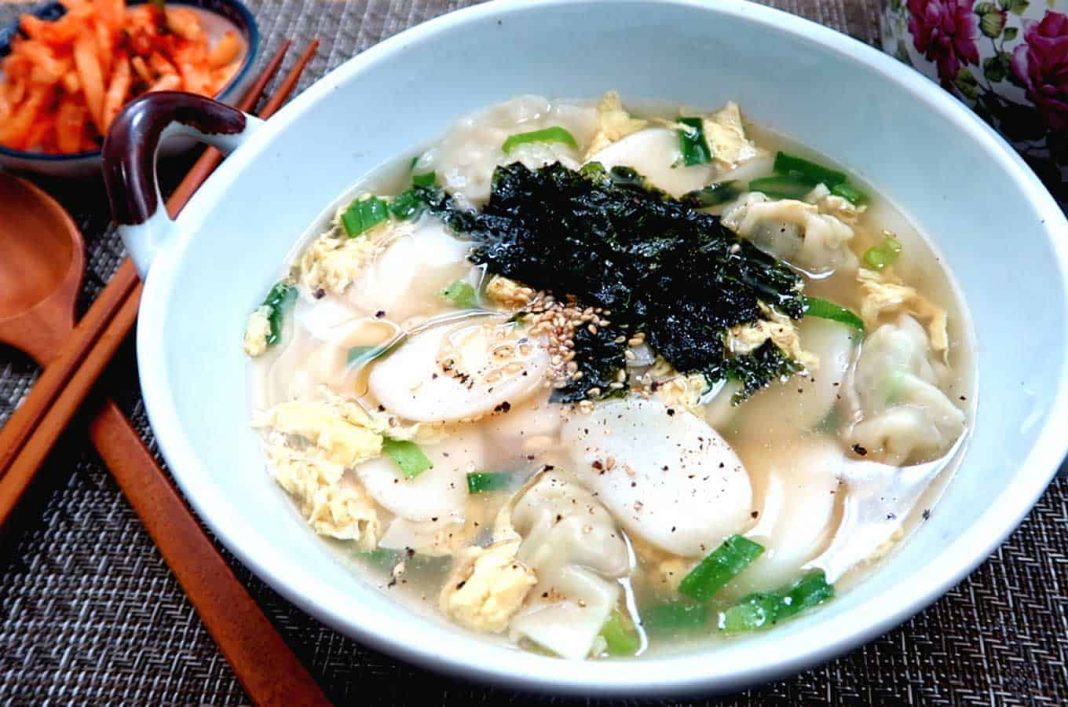While some of the main dishes prepared can vary by family and the region they are from, one dish that is ubiquitous across all Korean families is tteokguk (or rice cake soup). This hot soup dish is made with a protein-based broth (most commonly beef) in which seasonings and sliced plain, oval-shaped rice cakes are cooked and then topped with chopped scallions, cooked meat, toasted laver, cooked egg.
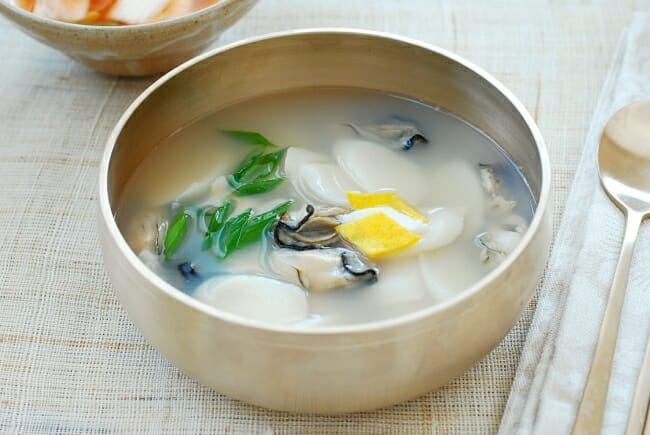
Eating tteokguk is not only thought to usher in good luck for the new year but on a significant level it reflects gaining a year older under Korean age when everyone turns a year older on New Year’s Day. The whiteness of the rice and soup is also said to reflect a pure body, mind, and heart as one enters the new year. Though all families will eat tteokguk, there are different variations of the dish including an oyster broth-based tteokguk in certain coastal regions and different shaped rice cakes such as the mini snowman-like joraengi tteok used typically in tteokguk of the Gaesong region. Other families also add homemade mandu (dumplings) to make it into more heartier dishes like manduguk or tteokmanduguk.
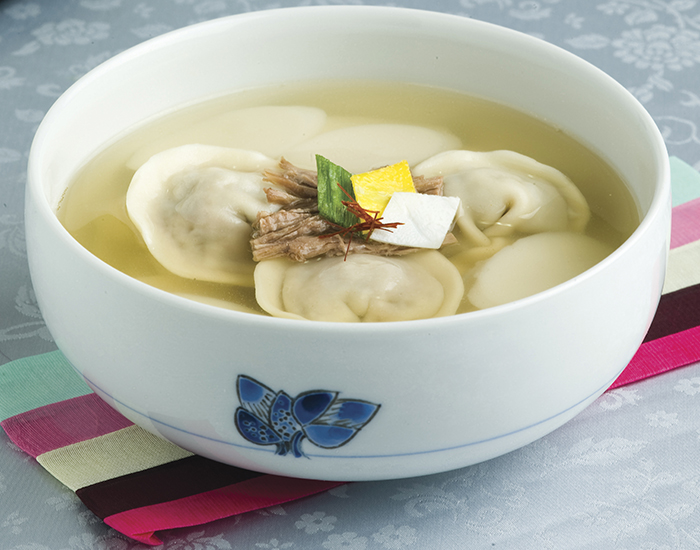
Various jeon (battered and fried dishes) are also typically prepared such as meat jeon, fish jeon, oyster jeon, coin-shaped donjeonya (although it’s more commonly called dongeurangddaeng), nokdu jeon (mung bean jeon), and also skewered jeon (where a range of rectangular shaped jeons are skewered and fried to make a colorful jeon).
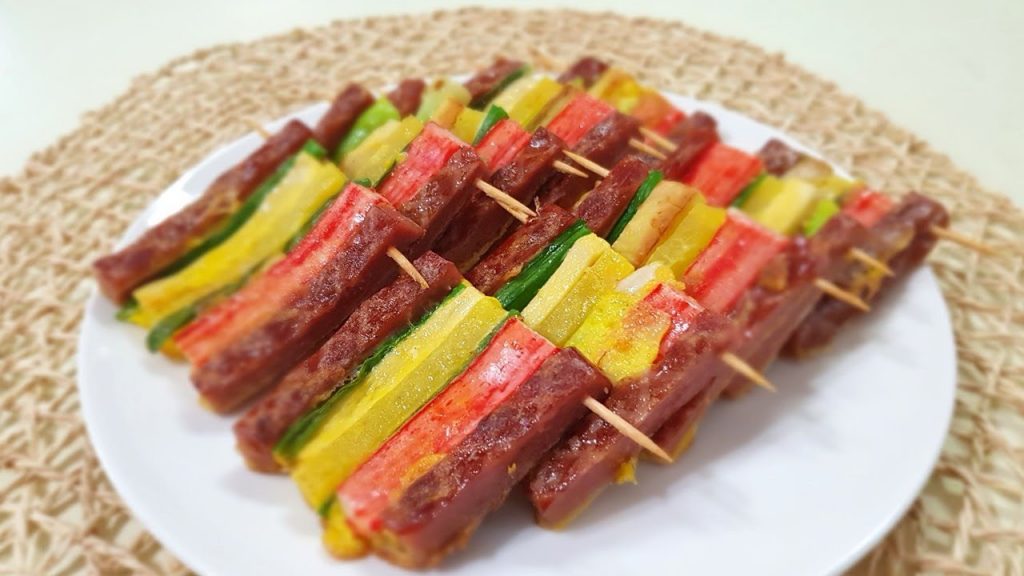
Other dishes you may find on the table include galbi jjim, jabchae, pyeonyook (boiled meat), squid or octopus (served plain after boiling or mixed in a spicy sauce), etc.
Dessert dishes include various tteok (rice cakes), gangjeong, yaggwa, sujeonggwa, sikhye, etc.
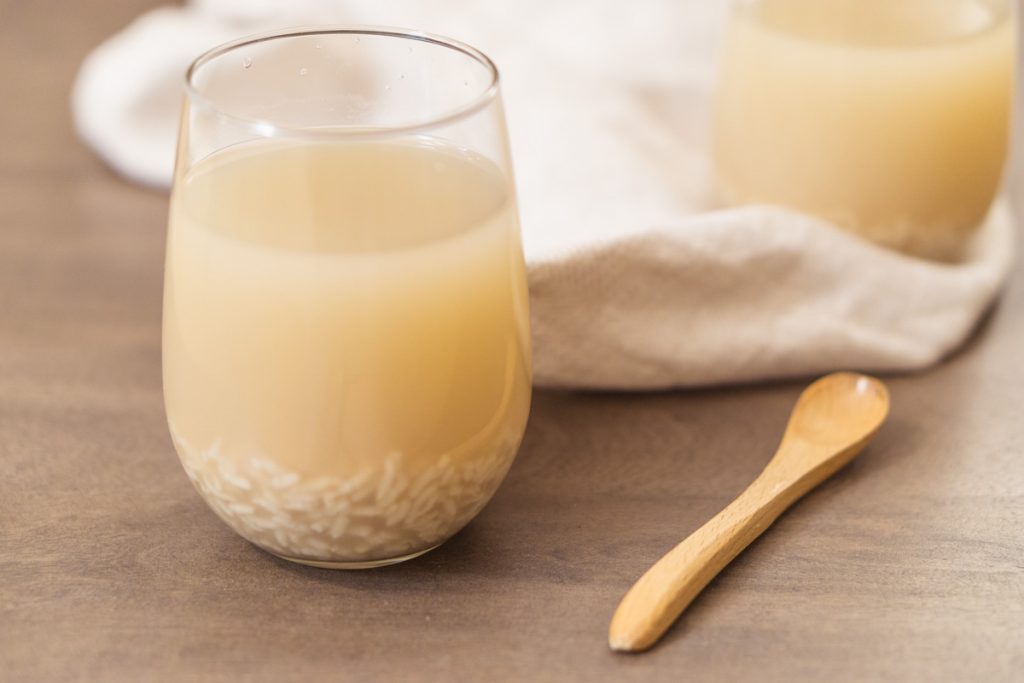
According to focusasiatravel.com





